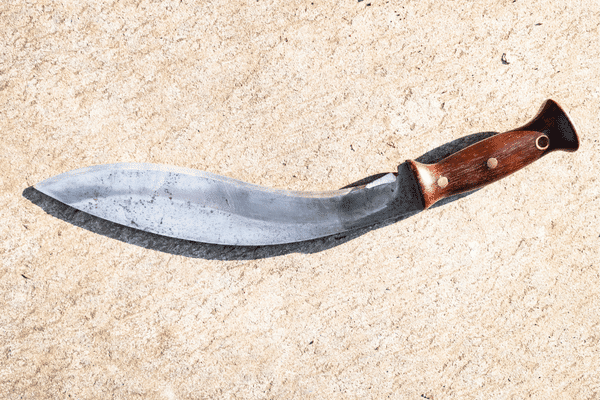Top Mistakes to Avoid When Choosing a Survival Knife: Your Guide to Wilderness Wisdom.
For anyone venturing into the wild, a reliable Survival knife is more than just a tool; it's a lifeline. It helps build shelter, gather food, navigate terrain, and potentially even defend against threats. But with so many knives on the market, choosing the right one can be daunting. To ensure you're prepared, steer clear of these common pitfalls:
1. Neglecting Purpose:
Every knife has its strengths and weaknesses. Asking yourself "what will I use this for?" is crucial. Will you be clearing brush, preparing food, or starting fires? A heavy-duty chopper might excel at the first, but its bulk would hinder delicate tasks. Conversely, a lightweight paring knife is superb for precision but lacks the heft for heavier jobs. Choosing a knife that aligns with your primary intended uses guarantees its effectiveness.
2. Skimping on Quality:
A survival situation is no time for a flimsy blade. Invest in a well-made knife constructed from high-quality materials like carbon steel or stainless steel with good wear resistance and edge retention. Cheap knives quickly succumb to rust, chipping, and breakage, potentially compromising your safety and survival. Remember, a quality knife is an investment that could save your life.
3. Blade Length Delusions:
Bigger is sometimes better. Excessively long blades might seem impressive, but they can be unwieldy in tight spaces or for intricate tasks. Aim for a practical blade length between 4 and 6 inches, offering a good balance between versatility and maneuverability. Remember, your knife needs to be an extension of your hand, not a cumbersome burden.
4. Handling Blind Spots:
A comfortable grip is paramount, especially in demanding situations. Choose a knife with a handle that fits your hand size and grip style comfortably. Consider factors like texture, material (avoid slippery options!), and finger grooves for added control. A comfortable knife minimizes fatigue and maximizes precision, both crucial for survival tasks.
5. Sharpening Shortsightedness:
Even the best knife will dull with use. Don't underestimate the importance of knowing how to sharpen your knife in the field. Learn basic sharpening techniques using Sharpening Stones or even improvised materials like ceramic mugs. Carrying a small, portable sharpener can also be a lifesaver. A sharp knife is safer and significantly more efficient at performing its tasks.
6. Feature Frenzy:
While bells and whistles might seem enticing, don't get bogged down by unnecessary features. Survival situations often favor simplicity and reliability. Stick to the essentials: a good blade, a sturdy handle, and perhaps a sheath for secure carrying. Complex mechanisms can fail or become inoperable in harsh conditions, adding unnecessary risk.
7. Ignoring Maintenance:
Proper care is key to maximizing your knife's lifespan and performance. Clean and dry your knife regularly, especially after exposure to moisture or corrosive materials. Oil the moving parts if applicable, and consider occasional professional sharpening for optimal performance. A well-maintained knife is a loyal companion you can rely on when it matters most.
8. Overlooking Legalities:
Knife laws vary greatly by region, so research restrictions and carry regulations before heading outdoors. Certain blade lengths, types, and carrying methods might be illegal in some areas. Ignorance of the law could lead to confiscation or even fines, so plan your purchase and carry style accordingly.
9. Solo Shopping Syndrome:
Don't be afraid to seek expert advice! Talk to experienced outdoorsmen, survival instructors, or knowledgeable staff at reputable outdoor stores. They can offer valuable insights based on your specific needs and environment. Remember, there's no shame in learning from others, and the right advice could make all the difference.
10. Neglecting Practice:
Familiarity breeds confidence. Spend time practicing and experimenting with your knife before venturing out. Learn basic cutting techniques, fire-starting methods, and shelter-building skills. The more comfortable you are with your tool, the more effectively you can utilize it in a survival scenario.
Remember, choosing the right Survival knife is an investment in your safety and well-being. By avoiding these common pitfalls and prioritizing quality, purpose, and practical considerations, you'll ensure you have a reliable partner in the face of nature's challenges. So, get informed, choose wisely, and practice diligently - your wilderness adventures will thank you for it.





Comments
Post a Comment